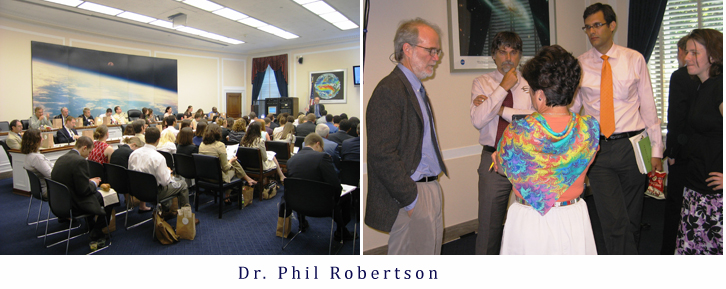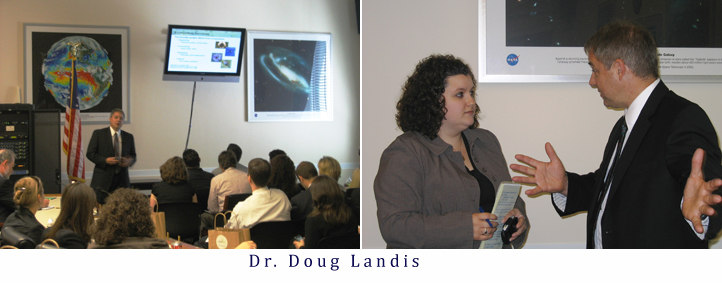ESA Hosts Congressional Briefing: The Sustainability of Cellulosic Biofuels
On June 11, 2008, ESA hosted House and Senate briefings on “The Sustainability of Cellulosic Biofuels.” Three scientists discussed the ecological and economic considerations surrounding the use of cellulosic sources – the leaves, stems, and other fibrous parts of a plant – for producing biofuels. Speakers included Dr. Phil Robertson of the Kellogg Biological Station at Michigan State University, Dr. Doug Landis, an entomologist from Michigan State University, and Dr. Madhu Khanna, an agricultural economist at the University of Illinois.
Combined, the two timely briefings drew an audience of over 115 people, including Senate Agricultural Committee and other congressional staff, representatives from federal agencies, as well as other interested parties from industry and the scientific community.
The scientists shared their expertise about the potential for cellulosic biofuels to offer a substantially greater energy return on investment compared to grain-based sources, such as corn. They cautioned, however, that environmental benefits are not guaranteed. The environmental success of cellulosic biofuels will depend on which crops are chosen, the practices used to manage them, and where the crops are located geographically.
Dr. Robertson spoke about the economic, environmental, and social elements of biofuel sustainability. Cellulosic crops can grow on land that is not necessarily suitable for food crops, thereby helping to reduce competition for land in the food vs. fuel dilemma. Cellulosic biofuel systems can offer mitigation for carbon dioxide emissions, clean water, and clean air, but these benefits will only be realized through proper balancing of environmental aspects and economic incentives.

Dr. Landis spoke about the value – both environmental and monetary – of maintaining high levels of biodiversity in agricultural systems. Growing cellulosic crops can help maintain high biodiversity levels because farmers can grow a greater variety of crops with more complex mixtures of plant species. A mixture of native grass and tree crops can keep wildlife habitat intact and support vital ecosystem services, including those that help other crops in the landscape.

Dr. Khanna stressed that the economic viability and environmental sustainability of cellulosic biofuels will be dependent on location, the development of new technology, and policies that reward fuels based on their environmental performance rather than their crop source. Crop yields will vary by location, as will the costs of harvesting, storing, and transporting them. Aligning energy policy and climate policy through biofuel tax credits that are inversely related to their carbon footprint can provide incentives to use high-yield, low-carbon cellulosic sources. Policies and incentives should also decrease reliance on exotic and invasive species, favor increased biodiversity at farm and field levels, and maintain or enhance ecosystem services.

In meetings with their Congressional representatives, the three scientific experts also highlighted the need for continued funding of critical multi-disciplinary research supported by federal agencies such as the National Science Foundation and the Department of Agriculture.
Click the links below to view the full presentations from the three speakers:
The Biogeochemical Promise of Cellulosic Landscapes
Dr. Phil Robertson, Kellogg Biological Station, Michigan State University
Biodiversity Implications of Cellulosic Landscapes
Dr. Doug Landis, Michigan State University
Economic Factors Affecting the Competitiveness of Cellulosic Biofuels
Dr. Madhu Khanna, University of Illinois
Click here to view the summary handout from the briefing
Click here to view ESA’s position statement on biofuel sustainability